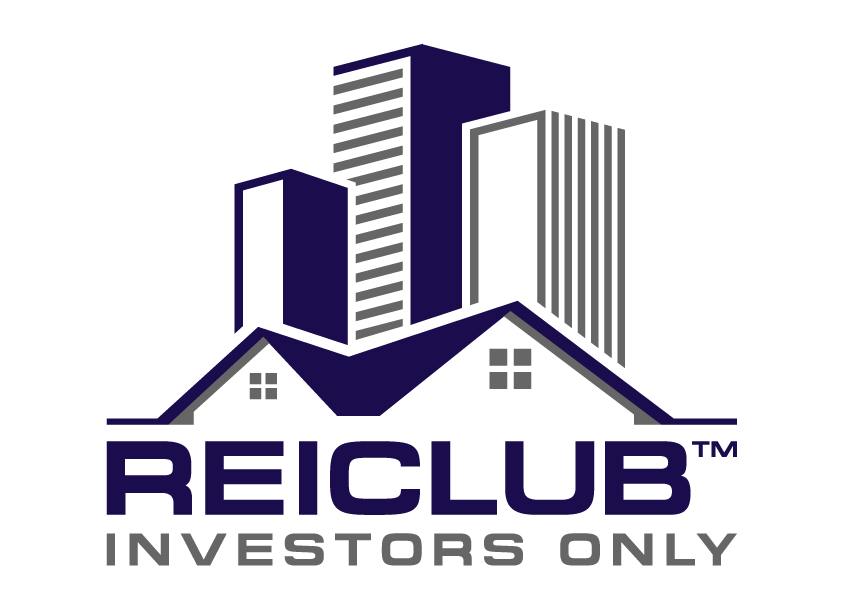A segment (niche) of the Affordable Housing Market, which has been rarely explored due to an ignorance of the laws regarding Church and State separation, received a breath of fresh air when in October of 2017 the Attorney General stated that “religious organizations are entitled to compete on equal footing for federal financial assistance used to support government programs.”
Initially reinterpreting Obama-era guidance in light of the Religious Freedom Restoration Act (RFRA) and Supreme Court precedent (specifically, Hobby Lobby, Masterpiece Cakeshop and Trinity Lutheran), to allow belief and conduct stipulations on employees. The directive also reiterates that Federal staff should ensure a level playing field for potential contractors of a religious nature, approach them “nonjudgmentally” with respect to their religious nature, and comply with RFRA and other laws.
You can read the full directive at the link. https://www.dol.gov/ofccp/regs/compliance/faqs/ReligiousEmployersExemption.htm
This niche or segment is Faith-Based Housing. I know, I know. Nobody wants to be involved with any combination of the Government and a Church or Religious Organization!
Well…How about, it’s a Gold Mine?
Faith-Based Community Development is not a new movement. People of faith have long understood that the outworking of their faith has resulted in providing help and encouragement to their community. Such involvement has ranged from individual efforts in neighborhoods, to church sponsored projects such as affordable housing, elderly care, and improving the health and welfare of the local community.
If you’re going to consider approaching a neighborhood which is built around a local religious building. Whether Church, Synagogue, Mosque or other religious edifice, it is important to insure that both the historical and theological are addressed in the beginning. I learned from experience, the Congregants and the leadership want the image of their place in the community to be preserved. This is not your normal development. You must identify the need so the development, whether 1 rehabbed house or 50 renovated multi-family units, fulfills the mission of the local congregation.
First, a historical perspective must be considered. Nehemiah first reminded his readers of the devastating effects of Israel's captivity by the Babylonians and Persians. He noted that it had been over 140 years since his beloved Jerusalem had been destroyed and still remained in ruins. Second, Nehemiah assessed the need of the people in Jerusalem, understanding their “great distress and reproach.”
Likewise, faith based community development today should begin with a thorough assessment of the historical perspective (how things got to be the way they are now) and the needs of the people (a precise identification of their condition). My first project involving a church was in Jackson, MS. Initially contacted by the Pastor and his Daughter, the City was soon brought in to assist in land acquisition and property renovation. You must bring the two main players together: local government and your client, the religious body. Local Government will usually recognize the need to support the development, this is found revenue. The same can’t be said for the faith-based body.
Their ministry is to the local Community and they want their people provided for through Ministry Efforts. However, pointing out that the more people that inhabit the neighborhood, the more potential new congregants and increased revenue via tithes, offerings and donations are realized. It is your job to make sure they understand the business aspects of the project, no matter how uncomfortable it may be. Most people are challenged when they learn that subsidies are used to support Community Development. Local government controls the available HUD Funds used for development, affordable home ownership or rental subsidies.
The cities, counties or states receive the funds and may apply them as needed. Your job is to make sure the project gets their fair share. If you are new to grant seeking, you may find yourself bombarded by a seemingly endless assortment of grant programs. Yet in the sea of grant programs, there are just four main types of grant funding: Competitive Grants, Formula Grants, Continuation Grants and Pass Through Grants; but for purposes of this Blog, we will consider just three. Community Development Block Grants, Home Funds and Section 8 Funding.
Each of these, in their own way, can benefit the developer of any size project. Additionally, there are twelve Regional Federal Home Loan Banks, who are federally mandated to provide 10% of their profit to projects meeting the requirement for Community Development. The Funds can amount to as much as $1 Million and may be used for anything from infrastructure to renovation. CDBG (Community Development Block Grant) Funds help pay for construction cost, neighborhood stabilization and various and sundry uses designated by HUD. HOME Funds provide additional non-designated funding through the CDBG (Community Development Block Grant) for any purpose as long as it is designated for low to very low income households.
If you do your job right, much of this funding is available for the projects you are considering. Perhaps, as you continue with the faith-based information you will understand why this can be a lucrative part of your career as a Real Estate Investor. This is not a shotgun approach to investing. Consider this a Sniper’s Rifle Shot Approach because a Sniper does all the reconnaissance to insure a successful mission. The same can be said for faith-based projects. Do your due diligence.
A church can play many important roles in the development process. Many churches that begin by playing an advocacy facilitator role, and through involvement and experience, may eventually set up a non-profit corporation and become a developer. However, becoming a developer may not be the best option for every organization because it is high risk and generally requires a lot of expertise, time, and resources. The different roles that a church can play through its outreach ministry are as varied as the projects they select:
1. Advocate – The church's history of ministry service and strong community ties can position it to develop key partnerships with community leaders, public officials, builders, bankers, and developers to promote the development of affordable housing through advocacy.
2. Catalyst Sponsor – The Church can be the catalyst through which the project is born. It can use its resources and influence to sponsor and initiate the development process and then support another organization as the lead entity.
3. Land Developer – Many churches own land that is adjacent to the church. This land could be sold or conveyed to the faith-based non-profit developer who could choose to facilitate affordable housing development by buying the land or getting options on other land, subdividing it and adding infrastructure. The land lots could then be sold to homebuilders for development.
4. Joint Venture Partner – Many faith-based non-profits enter into joint ventures with experienced housing developers (either non-profit or for-profit) that need the community-based organization's knowledge of the community, pool of potential clients, political influence, or public funding subsidies. Joint ventures are excellent ways to learn about housing development, however each partner must realize the value they bring to the partnership. Although motives for involvement may vary, each should realize a benefit. The non-profit should always consult an attorney when considering a joint venture partnership.
5. Single-Family Developer – The developer acquires the property, undertakes the building construction or rehabilitation, and sells the housing once construction is complete. As a developer, your organization makes the decisions and assumes the risk. This role requires knowledge, expertise, resources, and/or the ability to access financing.
6. Multifamily Developer – The multifamily developer role is the most difficult and carries the greatest risk. The developer acquires the property, arranges predevelopment, construction and long-term project funding, and constructs or rehabilitates the structures, in addition to being responsible for the long-term management of the property.
7. Investor – The church or non-profit can also invest in the development of affordable housing. The investment can be cash or in-kind, with or without a financial return. By investing time, talent and re-sources, the non-profit becomes vested in the project and helps ensure its' success.
8. Lender – The church as a non-profit can also serve as a lender for the project. The church can provide a seed loan to the affordable housing developer to initiate operations. Once the organization is stable and has undertaken its project, the loan can be repaid to the church. The church as a non-profit can also serve as a source of down payment assistance for potential borrowers, by either lending funds from the church directly or acting as an intermediary to obtain funds from government or private funding and dispensing them to borrowers.
9. Project Manager – The faith-based organization selects a project manager to serve as its representative. The project manager reports directly to the Executive Director or Board of Directors. The project manager will coordinate all aspects of the project's implementation. He or she will work directly with development professionals and is responsible for directing and monitoring the project.
10. Home-Buyer Counselor – A natural role for many churches or faith-based non-profit organizations is to identify potential home buyers in the congregation or community and assist them in preparing for homeownership. The organization may seek to establish a homebuyer education and counseling program directly, however, this role requires extensive knowledge, expertise, and resources.
Alternatively, a faith organization could partner with existing housing counseling agencies to deliver these services to the community. For example, a faith organization might invite a housing agency to conduct workshops for members at its facilities. Similarly, faith organizations can assist in pre-qualifying home buyers for mortgage loans, provided they have the necessary knowledge and expertise. If not, the organization can work in partnership with an experienced agency. Home-buyer counseling can be conducted on a fee-for-service basis or as a contracted service for a financial institution or builder.
11. Property Manager – As the property manager, the non-profit will ensure that the property is maintained in good repair and is also in charge of tenant leasing, collecting rents and daily operations relative to the property. The management fee is usually 3 percent to 5 percent of the gross rents. The Faith-Based Facility can and should choose different roles for different projects.
Some considerations to keep in mind include:
- capital requirements,
- risks involved,
- expertise and specialized skills needed,
- time to complete projects,
- impact on the community, and
- amount of control of the project and process.
During the early part of my career as a Real Estate Entrepreneur, I quickly learned there is a lot that is involved when you venture outside your comfort level.
For many families’ homeownership is a dream. Through counseling and education, their dream can become a reality. Many “would be” homeowners are scared away because of a process they feel is complex and intimidating. One way to minimize the fear of the home-buying process is to provide clear and consistent information and high quality guidance for buying a home. Churches and faith-based organizations can help facilitate this process by educating members of their own congregations and branching out to serve the entire community.
By hosting a Home-Buyer Education Learning Program for potential home buyers, the church facilitates the development of affordable housing and essentially becomes the first step to homeownership and self-sufficiency. The objective of this program is to educate and answer the many questions potential home buyers have about the home-buying process.
“To learn is to teach.” -Japanese Proverb




We love your feedback and welcome your comments.
Please post below: